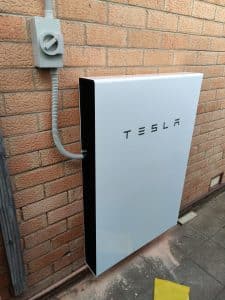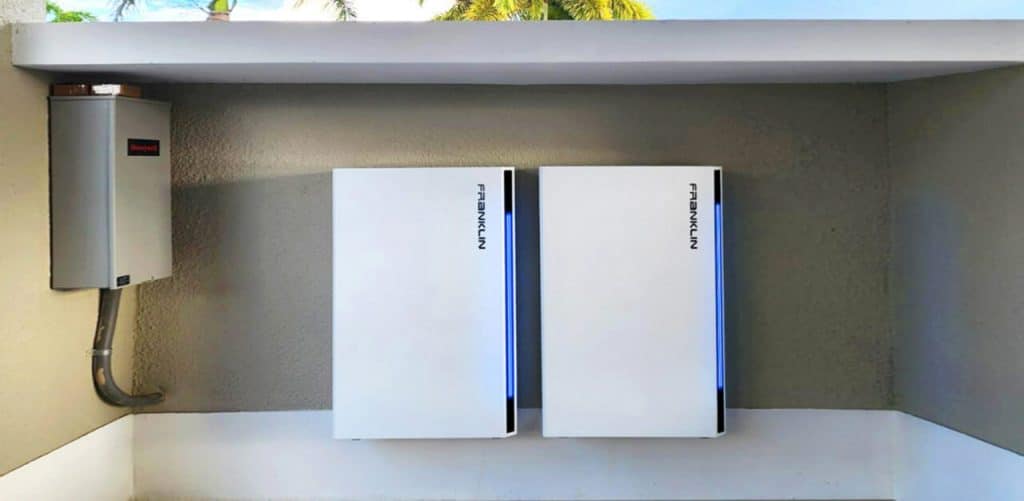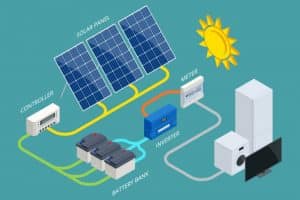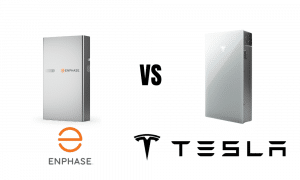Residential energy storage solutions have become increasingly popular in Australia, allowing homeowners to harness and store renewable energy at their convenience.
In this comparison, we examine the specifics of two prominent options: the Tesla Powerwall 3 and the FranklinWH. Because the two have similar specifications and functionality, it’s easy to confuse them. That’s why we will dig a little deeper to help you find the one that best suits your needs.
Tesla Powerwall 3

The Tesla Powerwall 3 isn’t available yet in Australia, but it is expected to be released in the market in the third or fourth quarter of 2024. One of the best features of this new solar battery is that it is built to be more reliable during a power outage compared to the Powerwall 2 because of its 11.5 kWh output power.
Thanks to its inverter with 6 MPPTs included, it will allow up to 6 strings and up to 20kW of solar panels without needing an additional inverter. Its higher continuous power output can also power heavy-duty appliances that use between 5,000 and 11,000 watts.
Currently, the Powerwall 3 can’t be retrofitted to an existing Powerwall 2, but that is likely to change with software upgrades. Besides its power, the Powerwall 3 has a better design that can maximise wall space.
The pre-installation cost is likely around AU$10,400, the same as the Powerwall 2. However, this doesn’t include the Tesla Gateway, so you will need to purchase it separately.
FranklinWH Battery

Franklin Battery is relatively new in the market. The company was founded in 2019 and launched its first product in 2022. It is one of the property owners’ considerations when deciding on a home solar battery. However, despite being the “new kid on the block,” Franklin Battery has garnered pretty good reviews over the years.
The battery is built with a focus on “whole-home backup.” Its main goal is to ensure property owners still have power during an outage.
With the Franklin Home Power Battery, property owners will get a 13.6 kWh energy storage capacity and a 12-year warranty. It has a 10 kW peak power output with a continuous 5 kW output power. It allows for up to 15 units of solar panels.
The verdict
Several factors come into play when choosing between the Powerwall 3 and FranklinWH for residential energy storage. Both systems offer excellent features and performance, catering to the diverse needs of homeowners seeking to embrace renewable energy solutions.
The Powerwall 3 impresses with its high energy storage capacity, efficiency ratings, and proven track record in the market. Its sleek design and seamless integration with solar panels and the grid make it a compelling option for many consumers looking for a reliable and efficient energy storage solution. Also, Tesla’s reputation for innovation and customer service adds further assurance to the appeal of the Powerwall 3.
On the other hand, the FranklinWH presents a robust alternative, boasting competitive energy storage capacities and efficiency ratings. Its durability, longevity, and comprehensive warranty coverage make it a viable choice for homeowners looking for a dependable energy storage solution. Its compatibility with solar panels and grid connection ensures flexibility and versatility in energy management.
Choosing between Powerwall 3 and FranklinWH depends on individual preferences, energy requirements, and budget considerations. Those seeking a well-established solution with a strong brand reputation may lean towards Powerwall 3. At the same time, those prioritising durability and warranty coverage may find the FranklinWH an excellent option.
Regardless of the choice, both batteries represent significant advancements in residential energy storage technology, empowering Australian homeowners to embrace sustainable energy solutions and reduce their reliance on traditional grid power.
Energy Matters has been in the solar industry since 2005 and has helped over 40,000 Australian households in their journey to energy independence.
Complete our quick Solar Quote Quiz to receive up to 3 FREE solar quotes from trusted local installers – it’ll only take you a few minutes and is completely obligation-free.













































